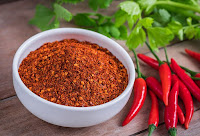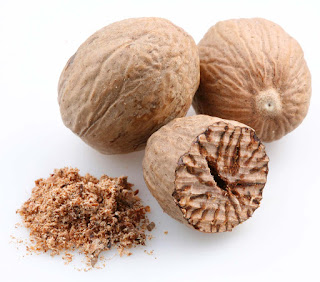History
The history of spices dates back to the prehistoric age. Studies and early documentation have found that hunter-gatherers wrapped meat with onion and garlic in leaves to enhance flavour.
India is one of the largest producer, consumer and exporter of spices, since the pre-colonial days when mariners came to India from across the seas to trade...spices being one of the goods sought after.
Spices have been used for generations across the world for their health benefits, it is also used for their medicinal properties.
In Biblical times(17thcentury)
.While researching on spices I found that during this period they were used as :
- religious offerings
- Burial rituals
- Medicinal properties
- Trade
- Seasoning
- During King Solomon's reign, we read about several culinary spices...
- Cinnamon and saffron were commonly used.
- When Queen Sheeba visited King Solomon she gifted him a variety of spices.
Ancient Egypt(1500B.C)
During this period we read that spices were used for medical treatment, some of the spices commonly used were caraway, coriander, fennel, garlic, mint, onion, peppermint and poppy seeds.
Evidence has been found that the Egyptian construction workers consumed onion and garlic for building up their stamina.
Historians have evidence of garlic cloves being buried with the body of King Tutankhamen.
Egyptians have been known to enhance the flavour of food with cinnamon and cardamom.
Chinese use of spices (2700B.C)
An early publication mentioned the use of more than 100 spices that were used for early medical treatment.
We also read about the spice" Cassia" very similar to cinnamon.
Nutmeg and cloves were brought to China by an opening of trade routes between India and China.
An anecdote suggests that the Chinese courtiers carried cloves and when they came into the Emperor's presence they popped a few in their mouth so that their breath was sweet when addressing the Emperor
Indian Origin of Spices
Spices and herbs have been used for hundreds of years. Black pepper, Cinnamon, turmeric and Cardamon have been used for medical treatment for thousands of years.
Spices are indigenous to India.
Sushruta a Surgeon in ancient times(4th Century B.C)used white mustard and other aromatic spices on bedsheets of patients to ward off malignant spirits.
Cinnamon, ginger and pepper was used as medicines.
It was a common practice to chew betel leaf to increase the flow of saliva to aid digestion.
Spices used in modern times
Vanilla
Is indigenous to Mexico and Central America.
It has a sweet woodsy and is lightly spiced.
The dehydrated whole bean pod is also used for flavouring both sweet and savoury foods.
Saffron
Is a spice that is native to the Mediterranean basin. The stigma of the plant called saffron crocus is dried and used. The saffron threads have a mild floral flavour and its beautiful yellow hue is used as a food colour too.
Peppercorns
These are the dried fruit of the flowering vine called Piper nigrum found in South India. This was was the most popularly traded spice.
It has a mild spicy heat and enhances the flavour of eggs, meats, poultry, fish, stocks and savoury dishes.
Oregano
It is a flowering perineal herb of the mint family, found in Eurasia and the Mediterranean basin
It has a warm citrusy flavour.
Oregano is used to flavour Mexican and Spanish cuisine, tomato sauce, pasta, pizza, marinades and barbecue sauce.
Nutmeg and mace
Mace is the outer covering of nutmeg. Widely used to flavour baked goods, desserts and is used in garam masala to flavour meats, poultry, seafood and marinades for mughlai cuisine.Mustard seeds
It's a widely used spice in India, especially the Southern part of the country. South Indian cuisine is incomplete without the tempering of mustard seeds. It enhances the flavour of tomato sauces, pickles.
Ginger
Ginger powder is the dried root, ground into powder, it is the root of a tropical flowering plant
Zingiber officinale. It has a milder flavour and a slightly sweeter taste than the fresh ginger root.
Ginger powder is used in Asian and Indian cuisine especially in curries, marinades for chicken and fish, in stir-fries and vegetables.
It is a popular ingredient in baked goods, beverages, desserts, Apple sauce, candies, cakes, cookies, fruit tarts, ginger beer and widely used for tea in most Indian homes.
Garlic powder
Garlic powder is made from dehydrated garlic bulbs. It's a bulb of a plant called Allium Sativum which is ground into fine powder. It has a milder and slightly sweeter flavour than fresh garlic.
It's a common seasoning for meats, garlic bread, barbecue sauce, pizza toppings, popcorn, roasted nuts, soups, blended salts and spice mixes.
Fennel seeds
Fennel seeds are dried flowering fruit of Foeniculum Vulgare. It is a hardy perineal herb
native to the Mediterranean basin. The seeds are aromatic with distinctive sweet liquorice, flavour used in savoury dishes in Asian and Indian cuisine, and Middle Eastern cuisine. It is used to flavour seafood, fish, and is widely used as a pickling spice throughout the Indian subcontinent.
Cumin
Cuminum cyminum is an annual flowering plant
In the family Apiaceae, native to the Middle East
and India. The dried seeds have a loamy nutty flavour with a hint of bitterness.it is used as a whole in tempering and is ground into a powder. cumin is used to flavour a variety of cuisine in numerous cultures. It is popular in Mexican, and Indian cooking.it is used to flavour barbeque sauces, curry powder, garam masala, soups and stews.
Coriander
Coriander is derived from the plant called Coriandrum Sativum, commonly known as Cilantro, or Chinese Parsley, it is an annual her native to Iran. The fresh leaves are called Cilantro and mostly used as garnishes. The dried seeds are called Coriander. They have a nutty flavour and is mostly used in Asian, Indian and Middle Eastern countries.
Cloves
Cloves are dried flower buds of an aromatic tree of the Myrtle family. Native to Indonesian Maluka Island. It has a strong pungent flavour used in meats, marinades, soups and stews. Mostly used for flavouring rice dishes in Asian, Indian and Middle Eastern countries.
Cinnamon
This is the dried inner bark of a species of Genus Cinnamomum. A tropical evergreen tree in the laurel family, native to Sti Lanka.it is known as the true cinnamon, with a delicate sweet-spicy flavour. Used to flavour baked goods, desserts and savoury cuisine.
Cayenne pepper
These are the dried ground fruit of Capsicum
And um, it is a perineal plant native to the Caribbean islands, Mexico, Central America and the Northern region of South America Mostly used to marinate meats, seafood and various types of sauces.
Bay leaf
These are dried leaves of an aromatic shrub native to the Mediterranean basin. It has a mildly astringent flavour with a hint of Eucalyptus and lights floral notes. In the dried form the flavours mellow down to a woodsy flavour.
Asafoetida
This is a dried resinous gum of the taproot of the species Ferula assa foe tide, it's a perennial plant from the arid regions of Afghanistan, India, and Iran. It's sold in blocks and is widely used in North and South Indian vegetarian cuisine. It aids digestion and is a flavouring condiment used in pickles too.
Tumeric
It comes from the turmeric plant and is widely used in Asian cuisine. It is also known for its medicinal properties. It is an antioxidant.
It is used in cosmetics and face packs.
It is widely used in Milk as golden milk to boost the immune system.
Nutmeg
This is a dried seed of an evergreen tropical plant called Myristica fragrant, native to Mollucas islands. This is widely used inMiddle Eastern cuisine, Asian and Indian cuisine too. It flavours sweet and savoury dishes too.
These are a few of the many(/ 107)spices commonly used in Indian cuisine























No comments:
Post a Comment